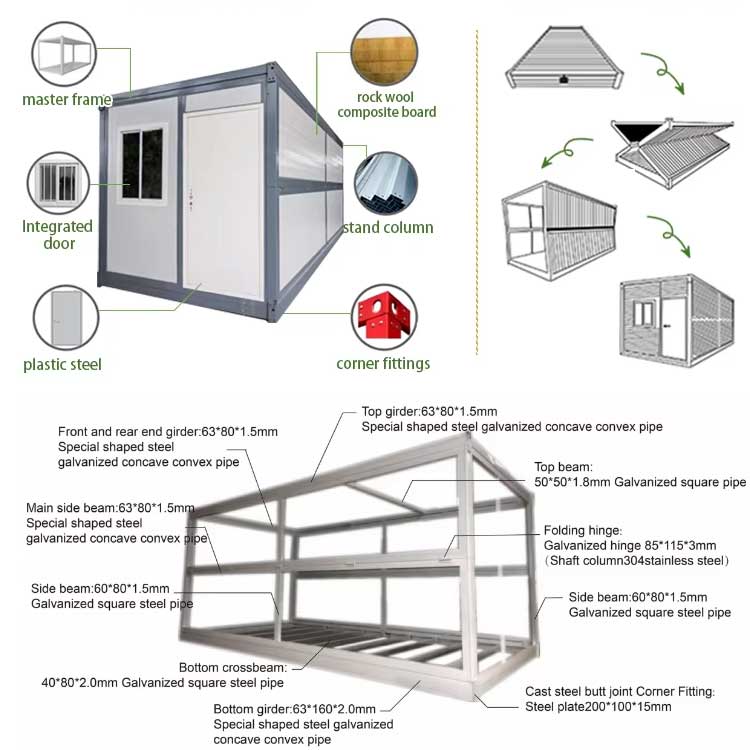



Foldable housing, also known as collapsible or portable buildings, are lightweight, modular structures designed for rapid assembly and disassembly. Typically constructed with steel frames and durable cladding materials (e.g., galvanized steel, aluminum, or composite panels), they offer flexibility for temporary or semi-permanent use. Key advantages include portability, cost-effectiveness, and adaptability to various environments, making them ideal for disaster relief, construction sites, tourism accommodations, or remote workspaces. Their prefabricated components allow quick installation with minimal tools, reducing labor and time costs. Modern designs often incorporate insulation, electricity, and plumbing for enhanced functionality. Foldable housing also promotes sustainability by enabling reuse and reducing material waste compared to traditional construction. Available in sizes ranging from single rooms to multi-story units, they balance practicality with space efficiency in urban and rural settings.




Applications and Advantages of Foldable Housing
Key Advantages:




